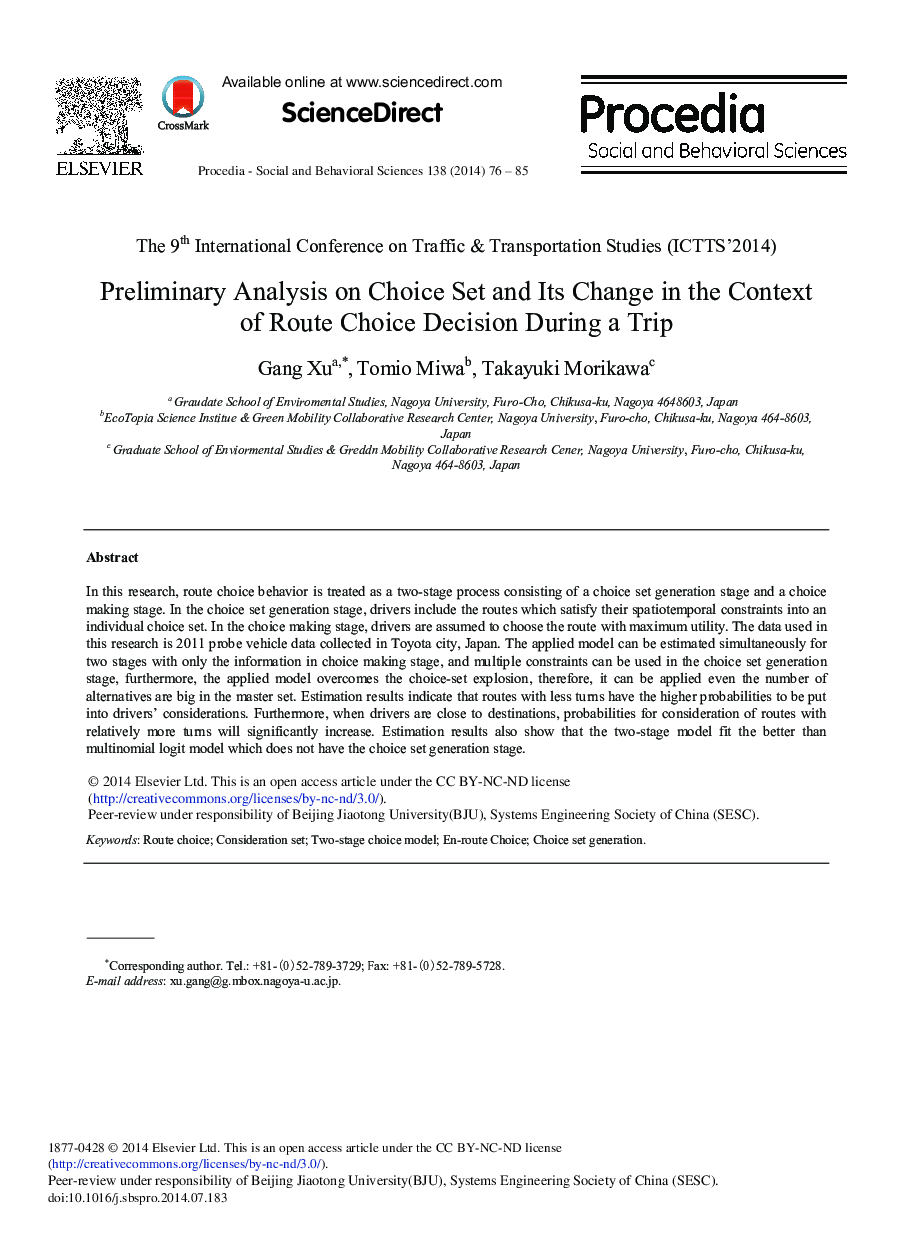| Article ID | Journal | Published Year | Pages | File Type |
|---|---|---|---|---|
| 1114201 | Procedia - Social and Behavioral Sciences | 2014 | 10 Pages |
In this research, route choice behavior is treated as a two-stage process consisting of a choice set generation stage and a choice making stage. In the choice set generation stage, drivers include the routes which satisfy their spatiotemporal constraints into an individual choice set. In the choice making stage, drivers are assumed to choose the route with maximum utility. The data used in this research is 2011 probe vehicle data collected in Toyota city, Japan. The applied model can be estimated simultaneously for two stages with only the information in choice making stage, and multiple constraints can be used in the choice set generation stage, furthermore, the applied model overcomes the choice-set explosion, therefore, it can be applied even the number of alternatives are big in the master set. Estimation results indicate that routes with less turns have the higher probabilities to be put into drivers’ considerations. Furthermore, when drivers are close to destinations, probabilities for consideration of routes with relatively more turns will significantly increase. Estimation results also show that the two-stage model fit the better than multinomial logit model which does not have the choice set generation stage.
